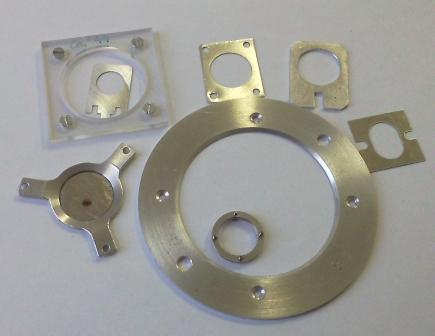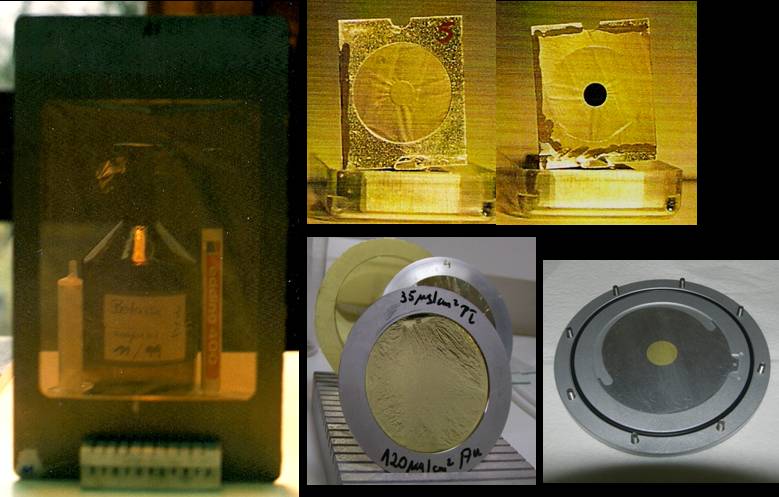The samples irradiated with beam of accelerated charged particles or stream of neutrons are called “targets”. The art of target preparation (“targetry”) is a cross between chemistry, physics and technical as well as manual skills. It is very useful to have some knowledge of crystallography, metallurgy, and vacuum technology at least on a basic level.
Targets used in nuclear research have various shapes and dimensions, thicknesses, physical (solid, liquid, gaseous) and chemical (elemental or compound) forms. They can be self-supporting or on a backing, they can be exposed to irradiation inside the accelerator, or in external set-ups on the beam lines.
All these parameters influence a choice of the method suitable for production of any particular target. The variety of targets parameters, the form of available starting material and its frequently limited amount, as very often target is to be produced from an enriched expensive isotope, and the experimental requirements (beam type and intensity) make it difficult to create any rough indications of best production technique for a specific target.
More about solutions for these problems you may try to find in publications provided by INTDS bibliography index.
You may as well pay a visit to one of the target labs with Sir Martyn Poliakoff who visited the GSI Target laboratory as part of his Periodic Videos presentations. Follow him.

Example of frames (made of plexi, stainless steel, aluminium) used for targets mounting.

Photo on the left shows: 8 μg/cm2 carbon foil stretched over 9 cm×12 cm aperture,
top right: back and rear of the 5 mm dia. Te spot (5.5 mg/cm2) deposited by evaporation on 40 μg/cm2 carbon foil, mounted on the frame with 15 mm aperture,
bottom left: 35 μg/cm2 polyimide foil (inner ø 8 cm) covered with 120 μg/cm2 gold and on the right: spot of 233U prepared by electrodeposition on the steel backing (placed in a container used for shipping).
